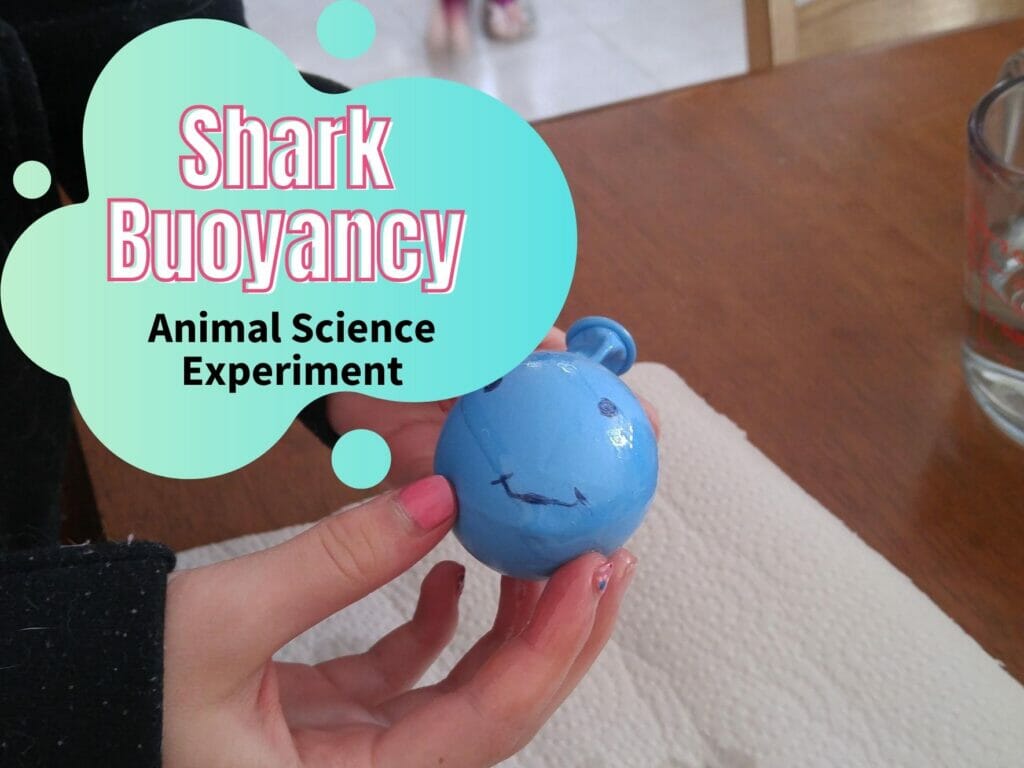This shark buoyancy is another great animal science experiment for animal lovers. Do your kids ever ask questions about animals and your not sure how to answer or explain them? Mine do as well, and then we have to find a way to replicate it to learn more.

Shark Buoyancy – Animal Science Experiment
This post contains affiliate links, see my disclosure policy for more information.
Similar to when we were learning about how arctic animals stay warm. This shark buoyancy is another great animal science experiment for animal lovers.
We love hands-on learning here, science experiments are a favorite way to learn and spend our time together in our family and homeschool. This science is easy to do, and perfect for shark week in July.
Floating Shark Science Experiment
What you need:
- a large bowl filled with water
- balloons
- dish detergent
- water
- vegetable oil
- marker (optional)
What you do:
Add about 1/4 cup of dish detergent, we used Dawn, vegetable oil, and water to each of your balloons. Try to get as much air out of your balloon as possible before tying the knot or it will affect your experiment.
Fill a large bowl with water. Or use your sink, bathtub, a tote with water.
Draw a face on your balloons if you want. A happy shark, sad shark.
Place your balloons into your bowl of water and watch see happens.

What you see happening:
What happens when you place the balloons in the water? Does one float? Does one sink? Is there one that is just kinda floating there in the middle?
There is one balloon that is going to float and this is the answer to how sharks can float and why this shark buoyancy animal science experiment can be a success.
Tip: make sure to get all the air out of the balloons or it will throw this experiment off.
What Helps Sharks Float
Sharks rely on their liver which has oil and fats. Their liver has two parts filled with oil and fats, substances that are lighter than water helping them to float.
The liver is as much as 30% of the shark’s weight, and although it helps for buoyancy, sharks must swim continuously to avoid sinking.
Animal Science Activity
We’ll be doing more animal-related science projects around here as I have three kids who love hands-on learning and science experiments. My oldest is an animal lover and wants to learn everything she can.
Make sure you check out our arctic animal experiment and learn how animals stay warm in freezing cold temperatures of the arctic and similar places.

Shark Buoyancy - Science experiment
Let's learn more about how shark float.
Materials
- balloons
- vegetable oils
- dish detergent
- water
Tools
- A large bowl of water.
Instructions
- Add about 1/4 cup of dish detergent, oil, and water to each of your balloons. Try to get any air out of your balloon before tying the knot or it will affect your experiment.
- Fill a large bowl with water.
- Draw a face on your balloons - optional.
- Place your balloons into the bowl of water and watch what happens.
Notes
Check out Arctic animal science experiments for more animal science fun.
